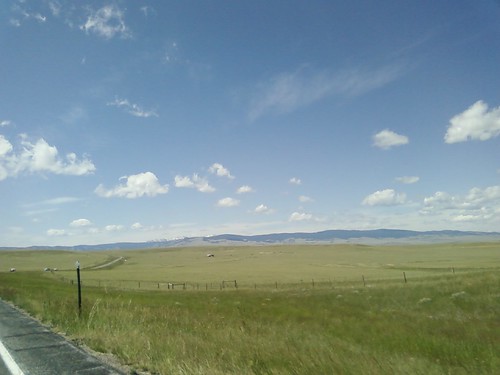
”
courtesy of ‘rejohnson71’
This past weekend Tectonic Theater Project performed its play cycle on the murder of Matthew Shepard and its effect on the town of Laramie, Wyoming – The Laramie Project and The Laramie Project: Ten Years Later. I was only able to attend the latter on its final night, which deals with the murder’s aftermath through interviews with town residents. It was a moving evening of documentary theater. Though Tectonic does not as yet list future tour performances, the plays are widely produced and I’m sure you will have a chance to see them if you missed this round at Arena Stage.
If not, watch clips online. Maybe while you’re waiting at the airport this week, fire it up. Start a dialogue with the person next to you. Who knows what may happen? You may learn something about the human capacity to alleviate discomfort by forgetting or distorting the past – “the nature of rumor,” as it’s described by a folklorist interviewed in the course of the play.
Matthew Shepard was murdered in 1998. I remember it not only as a murder whose horror was shocking in itself, but as an incident that catapulted hate crime and homophobia to the national news. It’s hard for me to stomach that there are college students in Laramie now who have absolutely no idea it happened, but that’s the truth as documented by Tectonic’s actors as they interviewed on campus while creating The Laramie Project: Ten Years Later. The nature of rumor is also responsible for what was once seen nationally as undeniably a hate crime to now be seen by many in the town as a drug deal gone wrong – and not just the town, but in national debates surrounding the 2009 Matthew Shepard Act. The play’s exploration of how that perception switch occurred (in part due to sensationalist media spin, no surprise there) is one of its most upsetting sections. The interviews with the men serving for Shepard’s kidnapping and murder are also incredibly disturbing as they document their own perception shifts on what they did.
Tightly directed with sparse design and minimal costumes, this is a play that could easily be performed by any – and that’s part of its success. The main pitfall would be tamping down any attempt by actors to comment on their characters’ viewpoints. A truly effective documentary play cannot condescend or comment on the people whose voices are being heard, no matter the artist’s personal feelings – it’s for the audience to react. The eight person ensemble this go-around rarely fell into that trap, and they were all extremely moving as they morphed into different personas (Scott Barrow, Mark Berger, Jeremy Bobb, Mercedes Herrero, Greg Pierotti, Amy Resnick, Christina Rouner, and Kelli Simpkins). There were no missteps in their journey giving voice to viewpoints of all kinds – admirable, mundane, despicable.
The play serves as a historical document really – a piece of oral history capturing the complexity of conflicting viewpoints on social issues in our time. As we learn in the play, the fence Shepard died on has been removed from the prairie, the physical beams marked with his blood gone. How long does it take for outrage to fade? For memory of outrage? For the journey from empathy to apathy? In our split-second culture, these are fascinating questions to explore… fascinating, depressing, and illuminating.

